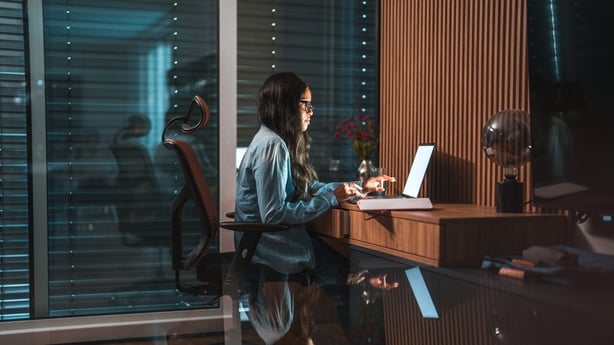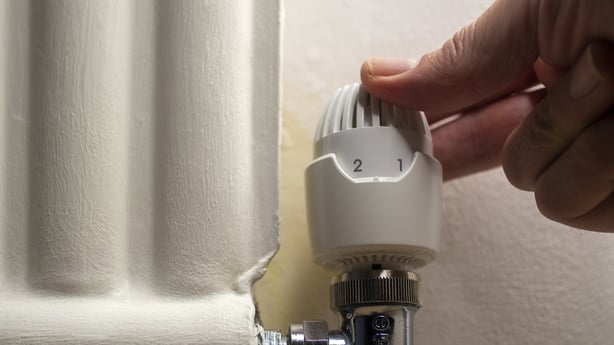Amid the ongoing energy and cost of living crisis, many businesses are seeking to lower their costs to stay afloat and avoid closure. With businesses looking to achieve economic sustainability, a greener solution is possible - here are some of the top considerations you can implement towards reducing your business's energy usage and carbon footprint.
Book an energy audit
As an important first step, learn where you use energy, where you waste energy and what you can do to be more efficient. SSE Airtricity, Ireland's leading renewable energy provider, offer two options for this. The first is a desktop audit, with the help of an on-site energy lead who can provide a remote tour of your facility. The second option is a comprehensive audit, which typically entails a one to two-day site visit. A full walkthrough will be undertaken by an expert who will provide a detailed audit report of the findings and recommendations to improve energy efficiency.
In the office

It’s not common knowledge, but central heating is actually more cost effective than portable heaters, with electric heaters costing twice as much to use. Once you’ve heated the office, your next task is to reduce heat loss. Close all windows, doors and blinds overnight (and during the day, where possible) to trap the hot air inside and prevent it from escaping. In addition, thermostats are a great way to control the heating room-by-room, as you can switch it off entirely if you’re not using a particular space for large portions of the day. For example, the communal kitchen will probably stay empty after the lunchtime rush, so it doesn’t make much sense to continue heating it after that point in the day.
A substantial amount of wasted energy can be saved by turning off electricals overnight. Make sure all computers and monitors are fully switched off before everyone heads home, and all energy-saving features are operating on things like printers and microwaves so they power down when not in use. It’s a simple step that all adds up.
Lighting can be a big source of energy consumption around the office, too. CFL and LED bulbs use up to 80% less electricity compared to regular ones, so be sure to have them as your go-to means of illumination. If possible, install motion sensors so the lights switch off completely when an area isn’t in use, and use daylight sensors so the lights can dim or turn off completely when (if) the sun shines to save on energy.
In the hospitality sector

Depending on the size of the premises, heating can be a huge contributor to your energy usage. Things like thermostats, time switches and radiator valves can work to control the heating and minimise the amount of wasted energy each day. Look at zoning off the most-used areas, which can have separate temperature controls from infrequently-used spaces.
Energy-efficient appliances and electricals can go a long way in reducing the carbon footprint of your business. When the time comes to replace things, always opt for the most environmentally-friendly model as opposed to the most cost-effective one. Even if it costs a bit more to get the most energy-efficient fridge, the savings will come in due course, as the model will have inbuilt features to lower the amount of energy it consumes.
Keeping your systems properly maintained will always prevent energy waste. For example, a regularly-cleaned ventilation system can increase its efficiency by 25% compared to one that’s left without a service. Always keep a log of your services and deep-cleans to stay on top of things.
Everyday energy-saving household habits can also be applied to the workplace. Circulate reminders for things like only filling the kettle with as much water as you need, keeping the fridge and freezer doors fully closed and only running the dishwasher and washing machine when they’re completely full, so that everyone is working together to achieve an eco-friendly future.
In retail spaces
Whether the lighting is located overhead or in display cabinets, always go for the LED bulb option as opposed to halogen. They have a longer lifespan, work on a lower voltage and are far more energy efficient. When it comes to their operation, install motion detectors so the lights power down in areas when there’s a low footfall, and use daylight sensors so the lights can be dimmed when the sun shines.
For appliances to work at their most energy-efficient level, ensure that they are regularly cleaned. Opt for energy-efficient models when the time comes to replace existing ones, and be sure to defrost freezers regularly to avoid a build-up of ice. Avoid overstocking fridges and freezers, as they use more energy to reach and maintain the correct temperatures when they’re overloaded with produce.
Heating and air conditioning adjustments all add up. According to the SEAI, every time you turn the heating up by 1°C you increase your heating costs by approximately 8%. Turning the temperature down by 2°C would save around €160 on a €1,000 bill. Naturally, have a seasonal review of the temperatures and use mother nature as your guide.
In housing associations
Insulation is key, with solutions like double-glazing and draught-proofing available, heat loss should be minimised. Pipework also needs insulation, as does the roof. It doesn’t make sense to heat a house over and over again. A properly efficient system heats once, then retains that heat for hours at a time. If the house is going cold after an hour or two, you’re in dire need of better, more energy-efficient insulation.
Replacing a conventional heating system with a heat pump system, particularly in a well-insulated dwelling, can transform the comfort levels in the home while reducing running costs, energy usage and harmful greenhouse gas emissions. In addition, the heat pump system can eliminate oil and gas bills from the home.
Solar solutions are a great way to approach lighting, too, along with energy-saving initiatives and eco-friendly bulbs. Environmentally-friendly CFL and LED bulbs should be your go-to in every property.
For businesses looking to go for 100% green energy, SSE Airtricity is the largest provider in Ireland to homes and businesses. Through low-carbon energy solutions like solar PV, LED lighting, demand side response, EV charging points and more, SSE Airtricity is an established and trusted energy partner helping people get on the road to net zero. Get in touch with the team today to find out how we can help you: https://sseairtricity.com/business
#ThisisGenerationGreen


